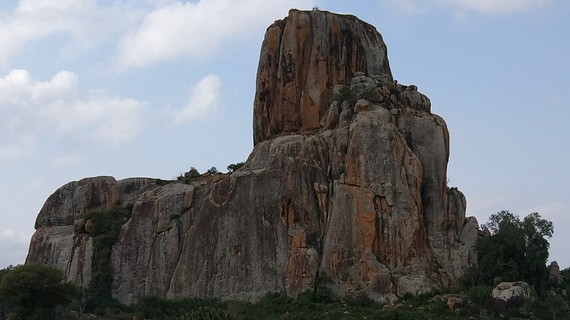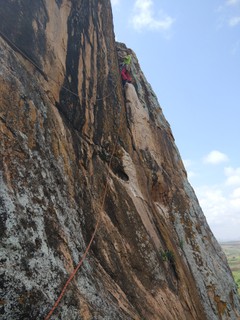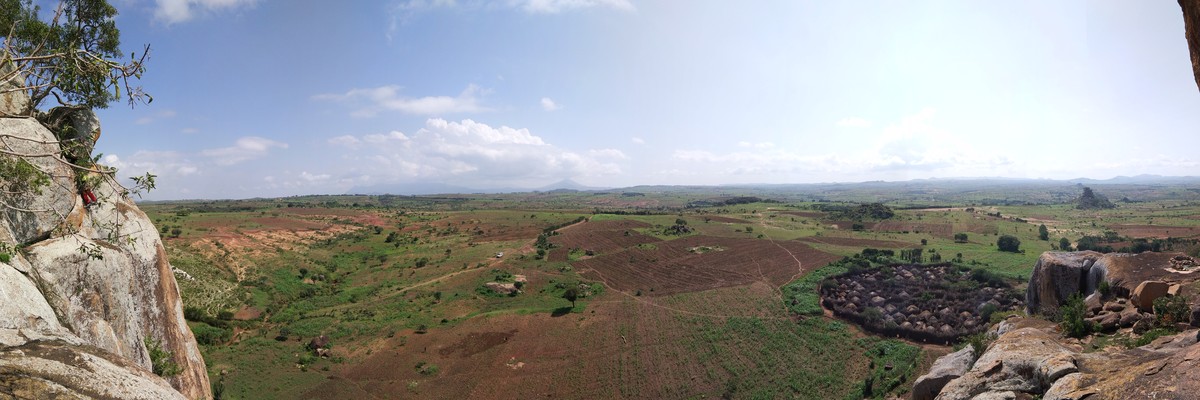A Crag Guide gives an extensive view of all sub areas and climbs at a point in the index. It shows a snapshot of the index heirachy, up to 300 climbs (or areas) on a single web page. It shows selected comments climbers have made on a recently submitted ascent.
At a minor crag level this should be suitable for printing and taking with you on a climbing trip as an adjunct to your guidebook.
This guide was generated anonymously. Login to show your logged ascents against each route.
Warning
Rock climbing is extremely dangerous and can result in serious injury or death. Users acting on any information directly or indirectly available from this site do so at their own risk.
This guide is compiled from a community of users and is presented without verification that the information is accurate or complete and is subject to system errors. By using this guide you acknowledge that the material described in this document is extremely dangerous, and that the content may be misleading or wrong. In particular there may be misdescriptions of routes, incorrectly drawn topo lines, incorrect difficulty ratings or incorrect or missing protection ratings. This includes both errors from the content and system errors.
Nobody has checked this particlular guide so you cannot rely on it's accuracy like you would a store bought guide.
You should not depend on any information gleaned from this guide for your personal safety.
You must keep this warning with the guide. For more information refer to our:
Usage policy
Contributors
Thanks to the following people who have contributed to this crag guide:
The size of a person's name reflects their Crag Karma, which is their level of contribution. You can help contribute to your local crag by adding descriptions, photos, topos and more.
Algunos contenidos se han facilitado bajo la licencia de: © Matt Battani (Matt Battani)
Table of contents
- 1. Naita Rock 1 in Crag
- 2. Index by grade
1. Naita Rock
- Summary:
-
Todo Escalada clásica
Lat / Long: 3.566277, 34.142466
Resumen
This incredible granite plug is a bit hard to reach, but once you are there, you'll be happy you came. Only trad climbed once, so a chance for second ascent and new lines abound.
descripción
About a 20 minute drive outside of Kaabong is the rock of Naita. We climbed it in four pitches, though it could have been done in less (see below). There was no evidence that anyone had climbed it before. We saw no pitons or tack at the top or anywhere along the way. Locals also told us that nobody has ever been on top. The top of pitch two and part of pitch three are accessible by a difficult walk and scramble up a chimney, so a local boy or two may join you along this section. One joined us, collected firewood and threw it down past us as we climbed. You can walk down from pitch two or three if you decide to turn around, though the hardest pitch is the first pitch, so if you send that one, you might as well go for the summit. We did this in rainy season and it wasn’t too hot or too bushy.
restricciones
Free and unrestricted however expect to be asked for money. Only climbed once so access negotiations would be ongoing. We gave a small gift of rice.
The local community was very friendly, but unlike some other places in Uganda, it felt as though this community had experienced very few outside visitors. They greeted us with a mixture of excitement, expectation and fear. As leaving, we gifted some dried beans to a local woman and gave two men a lift to Kaabong. We were repeatedly asked for money, but didn’t give any. We departed with mostly good feelings all the way around, though a couple folks were clearly disappointed with our refusal to give cash. However, a local man assured us that we would be welcome back to climb again.
Acceso
Naita Rock, Village of Yorun outside of Kaabong, Lat 3.56607 Lon 34.14223
Drive and walk up: Leave Kaabong on the road to Kidepo, just outside of town, turn right by small mountain with the large radio tower, continue straight for awhile and then turn right. You will be able to see Naita Rock on your right. Decent village roads get you about 200m from the rock. There is an impressive local settlement manyatta called Yorun at the base of the rock, so there are trails all around the rock making scouting and access quite easy.
Alojamiento
There is a guest house in Kaabong or camp nearby, with local permission, of course.
Ética
This community seems to have encountered very little outside visitors. Be very careful not to alarm or quarrel with the locals. Naita and Yorun is their world. Be on your best behavior as very little is known about this community.
I took photos of local children and an aerial view into the manyatta from the top of Naita. I showed these photos to many local people who were nothing short of amazed.
Historia
First Ascent by U Pitsche and M Battani July 16th 2017
On the Geology: These (Naita and the row of connected rocks) appear to be plutons (plutonic stocks or diapirs of some sort to be more precise), which are igneous intrusions. Had they fully extruded through the ground from magmatic activity then they would have been volcanic, but these stocks form from magma welling up and cooling beneath the surface and their linkage may be expressed along what are called dikes which have left their expression as the long linear boulder remains between the stocks and which form from cooled magmas forming vertical walls along fractures. Erosion has brought the stocks to their current prominence (looks to be granite), which makes for great climbing. Volcanic rocks tend to not be very good for climbing since they tend to weather quickly into clay mostly, whereas granite is a crystalline matrix, which has lots of the durable mineral quartz. For more information you can Google plutons, plutonic diapers, and batholiths, which are related and are world known for great rock climbing. –Matt McCullough Geologist
   |
||||||||
| Route | Grade | Style | Selected ascents | |||||
|---|---|---|---|---|---|---|---|---|
| 1 |
★★ A Peak in the Keep
Take all your big cams for this one.
Rappelling off: (one pitch) There is very old bush with a large trunk near the east face. We left a piece of tack behind and rapped of there. About a 25m rappel gets you to the enormous platform on the side of the manyatta, from which you can hike/scramble down. We moved about ten large flakes that could have fallen during the rappel as they sat near or under the rope, so be very careful with these. You should see the path we cleared. We saw a 1m coppery brown snake and some lizards up there. Several large owls make their home on this rock as well. There is lots to see from this summit. Check out the manyatta. The view inside is incredible. Also, you can see all the other plutons in Naita's row. There is much potential climbing in this "rim". Hike down: You’ll see a narrow chimney from which we could squeeze down, but you could also rap down to the ground. From there, the path moves right along the edge of the main rock. Finally, scramble down a couple of ledges until you reach solid ground. Well done, you have made it back. PAL: Matt Battani & U Pitsch, 16 Jul 2017 | 18 | 90m, 4 | |||||
2. Index by grade
| Grade | Stars | Name | Style | Pop | |
|---|---|---|---|---|---|
| 18 | ★★ | A Peak in the Keep | 90m, 4 |

